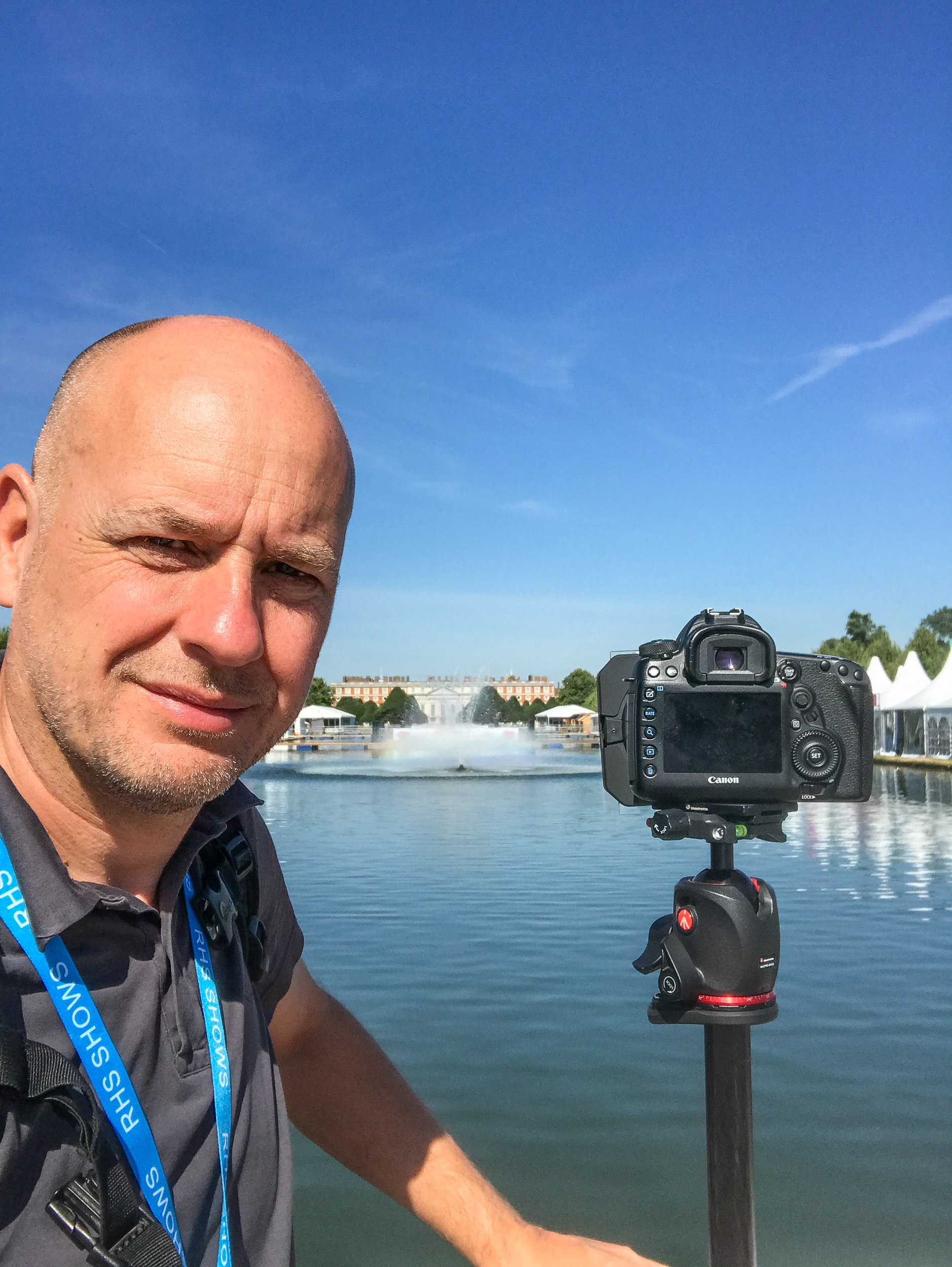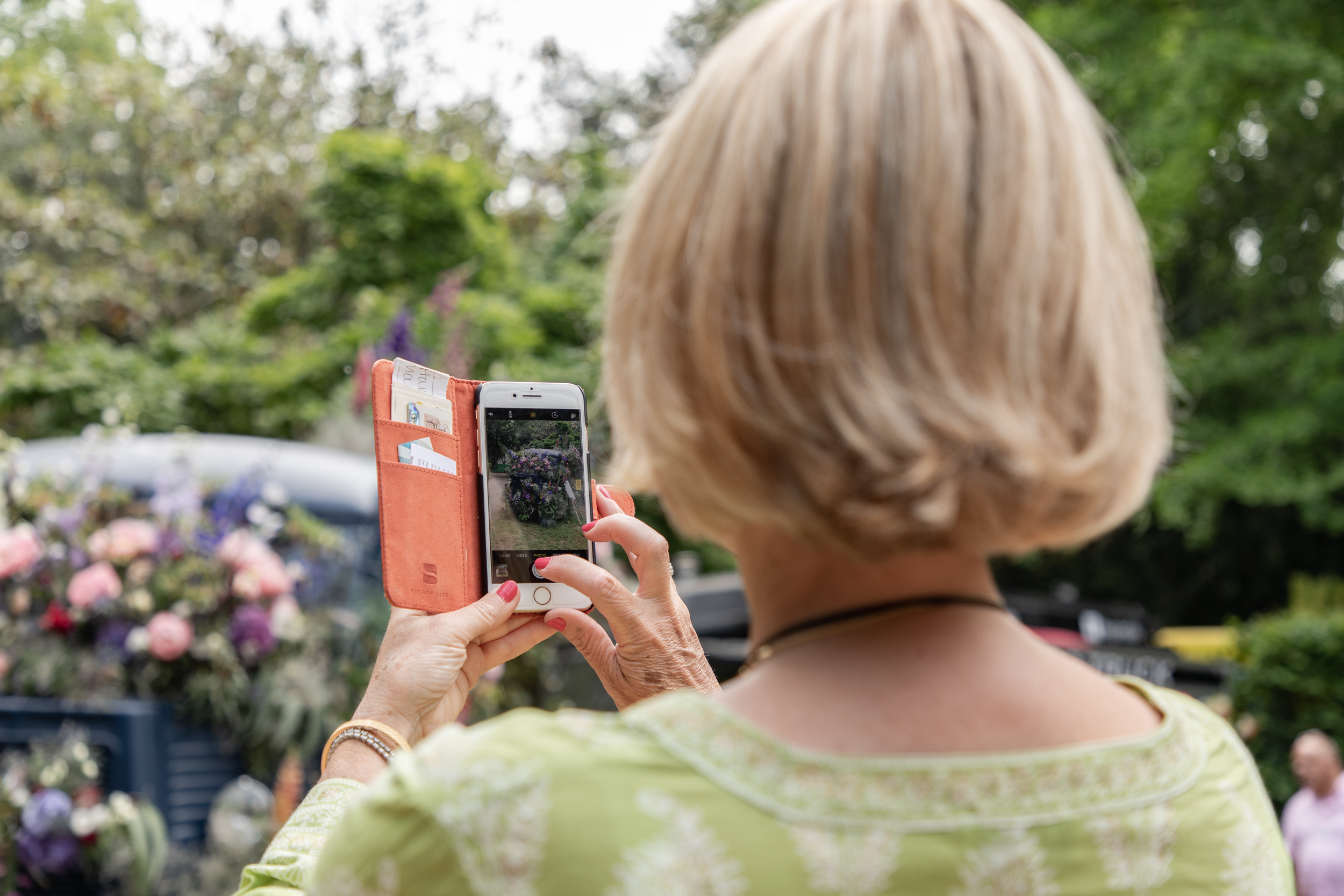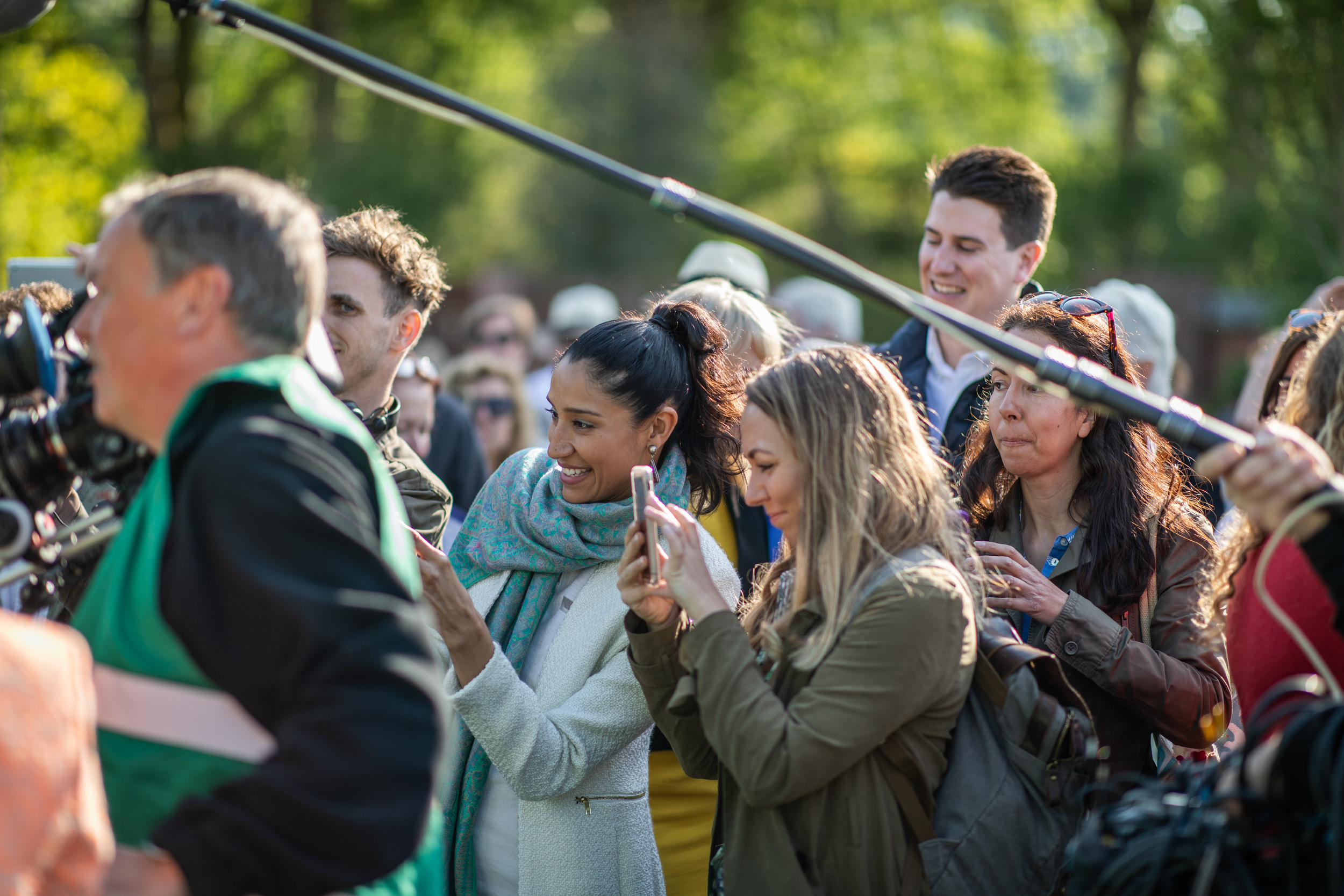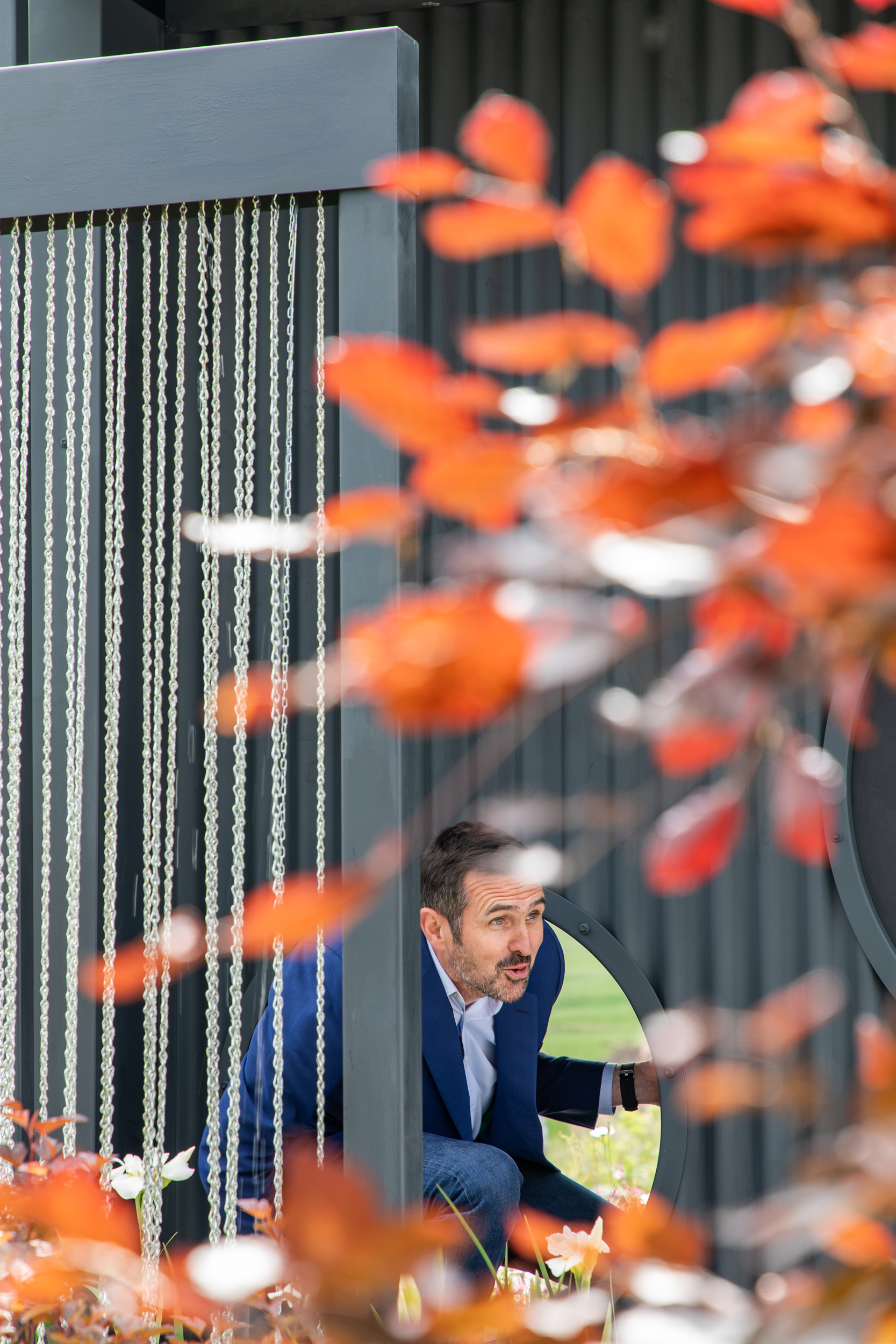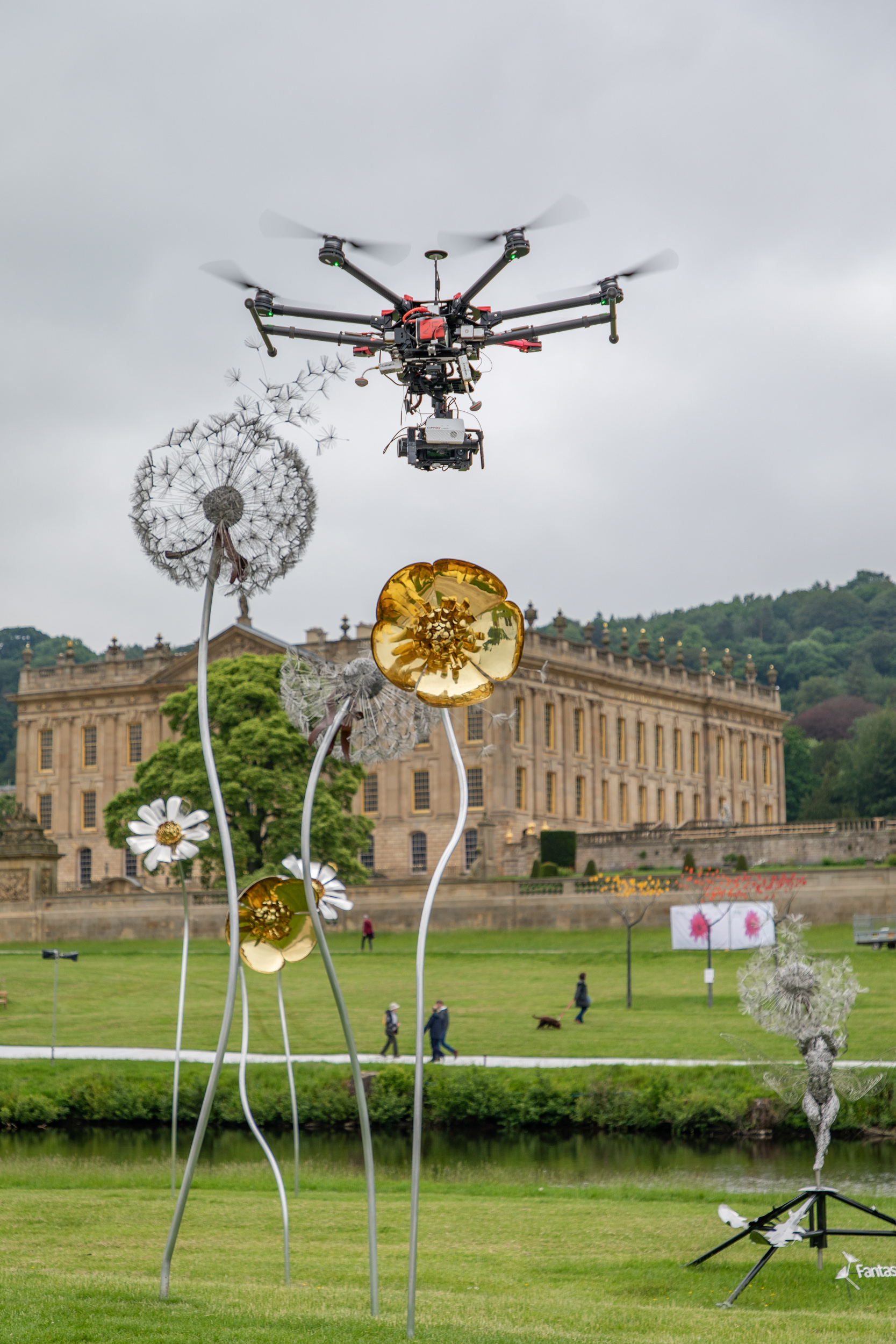Gardening Industry Clients
The bulk of my clients come from the gardening industry so from May until July my work load is slightly manic. Show season is in full swing and the major RHS shows are where my clients exhibit their beautiful products.
I am currently three shows in with RHS Flower Shows - Chelsea, Chatsworth and Hampton Court all completed and I am currently planning for RHS Tatton Park.
A quick selfie at this years Hampton Court Flower Show.
How Times Have Changed
During my time at the shows this year watching all the media specialists go about their specific jobs, it has made me reflect on how the role of a photographer has evolved over the years. Its bizarre to think that not long ago all a photographer had to do was capture the perfect image. Back in the days of film the turn around of captured images into print would have been a slow but still impressive overnight process. This speed would have only been available to the top photographers in the industry who, having been specially commissioned to shoot imagery to a brief, i.e. a sporting event or something like the Queen’s visit to RHS Chelsea Flower Show. The exposed film would have then been whisked off to be processed, the processed film then scanned onto high powered computers available to very few people, these images would then be turned into print in magazines and newspapers for the next days news stories.
In what seams only a short space of time this has now been completely changed. Most people hold in their hands, in the form of their phones, the means to capture an image and instantly upload this to the waiting world seconds after the event has happened.
A visitor at this years RHS Chelsea Flower Show grabbing a quick image on her phone.
The Instant World of Social Media
This instant world and the advancement of phones and technology has been challenging for photographers who now have to battle to capture perfect images and get these images out very quickly for their clients. I have been commissioned to capture images of show gardens, and show stands, which are invariably not finished until the last minute just in time for judging on RHS Press days. These images are then sent electronically to waiting design agencies who paste them into literature that then has to be printed and delivered to site ready for the following, or even the same day when the gates open to the public.
These images are also quickly populated into blogs and news features on websites, plus they need to be re-sized and clipped to suit all the social media platforms of Facebook, Twitter, Instagram, Snapchat, etc. Guess what? Each platform has a differing size requirement just to add more complications. So as a photographer you are constantly framing images to take these platforms into account. Some require square format, portrait, format, landscape, cropped landscape, this list goes on.
Film crews and visitors all trying to capture the perfect image
What Kit to Use
My current kit includes a Canon DSLR 5D Mkiv and a back up Mkii that can capture professional imagery using all my range of lenses, including various zoom lenses and my new addition of a 85mm F1.4 prime lens. On top of this I have flash units, tripods, tripod heads and a whole list of filters. I also have at my disposal my iPhone or iPad. These devices allow me to wirelessly transfer images to them so I can quickly tweak the levels and make any adjustments using image editing software. I can then upload them to the ‘Cloud’ to waiting clients via data transfer sites. I also manage a couple of Instagram accounts as well as my own so I do try to capture some imagery using my iPhone for Instagram Stories, Snapchat, etc.
Bill Bailey at Hampton Court Flower Show grabbing a selfie with designer Lilly Gomm
Is Everyone a Photographer
Well yes I guess we are? We now capture more images that ever before with our phones. I often get asked by people wanting to get into photography what camera to buy. I always say one of the best cameras is in your pocket in the form of your phone. These can capture some fantastic images and video. The skill is in the composition of the image and ‘seeing’ the shot, this is the something that for skilled photographers comes as second nature but for others it can be hard to learn. You can then use a multitude of Apps to enhance the captured images.. You only need to take a look at Instagram there are some fantastic photographers with massive followings who only use iPhones.
Why Do I need to use a Professional Photographer then?
In reality pro photographers are practiced in their area of work and expertise undertaking many hours behind the camera to guarantee they capture the perfect image. iPhones are great but nothing can compare to a shot captured on a DSLR camera with a prime lens, in RAW format, edited in Lightroom… sorry to get a little technical but its true.
Most pros will also back up their RAW data and store the images for you in a safe and controlled environment so you and recall the image at any time. They can also resize the images depending on the platform you are wanting to show them on, i.e. web, brochure, social media, etc.
The other point to remember when commissioning a photographer is most specialise in quite niche areas so it is important you choose the right photographer for the job requirement. A product photographer might be perfect for a still image for a website but you would need someone more skilled in social settings for a PR shot involving people.
Dancers from the International Art Collective performing on the Brewin Dolphin Garden at this years RHS Chatsworth Flower Show.
The other advantage a pro gives is organising the shot, i.e. going back to ‘seeing the shot ‘and the understanding of what a scene and light conditions can give to an image. Then moving the elements of a shot, or simply repositioning himself/herself to get the best angle. At one of the shows recently one of the shoots was of a troop of dancers in front of a garden. The scene had to be composed well and the dancers had to repeat their performance several times to capture the perfect image to tell the story.
Adam Frost at this years RHS Chatsworth Flower Show.
When you are at shows where there are many photographers all taking the same or similar images, you do have to try to think a little outside the box when viewing a scene. At the recent RHS Chatsworth Flower Show Adam Frost was filming his piece for BBC Gardeners World on one of the Show Gardens. It was a child friendly garden and I saw he was going to film a piece climbing through a hole on the stand. So I quickly disappeared behind the garden to capture him as he emerged. I think this image was unique as I was the only photographer in position.
Photographers also capture images to best show the clients products, gardens or whatever the subject may be. They do this with a view to post production in programs like Lightroom and Photoshop. An understanding of how these programs work makes the decision of what to capture in camera easier. The one thing no-one likes is hours editing out distracting details from an image.
The Future
I see the demands of speed and the ability to process both images and video quickly increasing. This is particularly so at newsworthy events like shows, open days, etc. Technology is changing almost daily with new platforms, apps and demand for visual imagery.
A Drone being used for filming at this years RHS Chatsworth Flower Show.
I also see photography/ videography roles having more specialist niche areas. e.g. you might book a drone specialist for overhead images, or it may be you want to tap into a photographers Instagram following, blog subscriptions etc. This all means as photographers we have to concentrate on our niche and become specialists and desirable to our clients.
I still maintain though that for an image or video to have real value and longevity for marketing material and use on websites, galleries, brochures and advertising then a slower pace has to be adopted. Nothing replaces quality so time planning a shoot, waiting for the right weather conditions and light if shooting outdoors, or the optimal lighting set up if in a studio environment. This is where a specialist professional photographer who really understands his equipment and his subject will still be of value to the demanding client.


